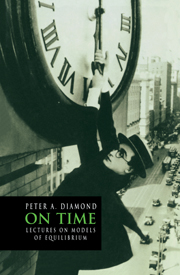3 - Short run and long run
Published online by Cambridge University Press: 31 December 2009
Summary
In the first lecture, I examined equilibrium in a single market. I examined the distinction between short run and long run in Marshallian analysis, proposing an explicit modeling of time in place of Marshall's implicit modeling with different atemporal models for different time frames. The lecture was made easier by the common core of modeling shared by so much of the writing on partial equilibrium. It does not much matter what textbook one picks up in looking for examples. It does not matter whether one uses introductory, intermediate or advanced texts. One can look to Marshall for a presentation that is a widely shared antecedent.
When considering models of an entire economy, the story is very different. To begin, there are two very different traditions of modeling an entire economy. Both microand macroeconomists engage in this activity. The Arrow- Debreu general equilibrium model looks very different from the Hicksian ISLM model. Within microeconomics, there is considerable uniformity. But, not within macroeconomics. Compare Robert Barro's (1990) intermediate text with that of N. Gregory Mankiw (1992) and one sees significant differences in the modeling techniques thought to be important. The legacy of Keynes is treated differently in the two. Graduate texts such as Olivier Jean Blanchard and Stanley Fischer (1989) or Thomas J. Sargent (1987) do not resemble undergraduate texts, or each other. Thus my task here is more difficult.
In the first lecture, I tried to portray a rich picture of the modeling of individual markets, based on models that consider different expansion paths for different firms and price competition with incomplete information.
- Type
- Chapter
- Information
- On TimeLectures on Models of Equilibrium, pp. 53 - 72Publisher: Cambridge University PressPrint publication year: 1994



